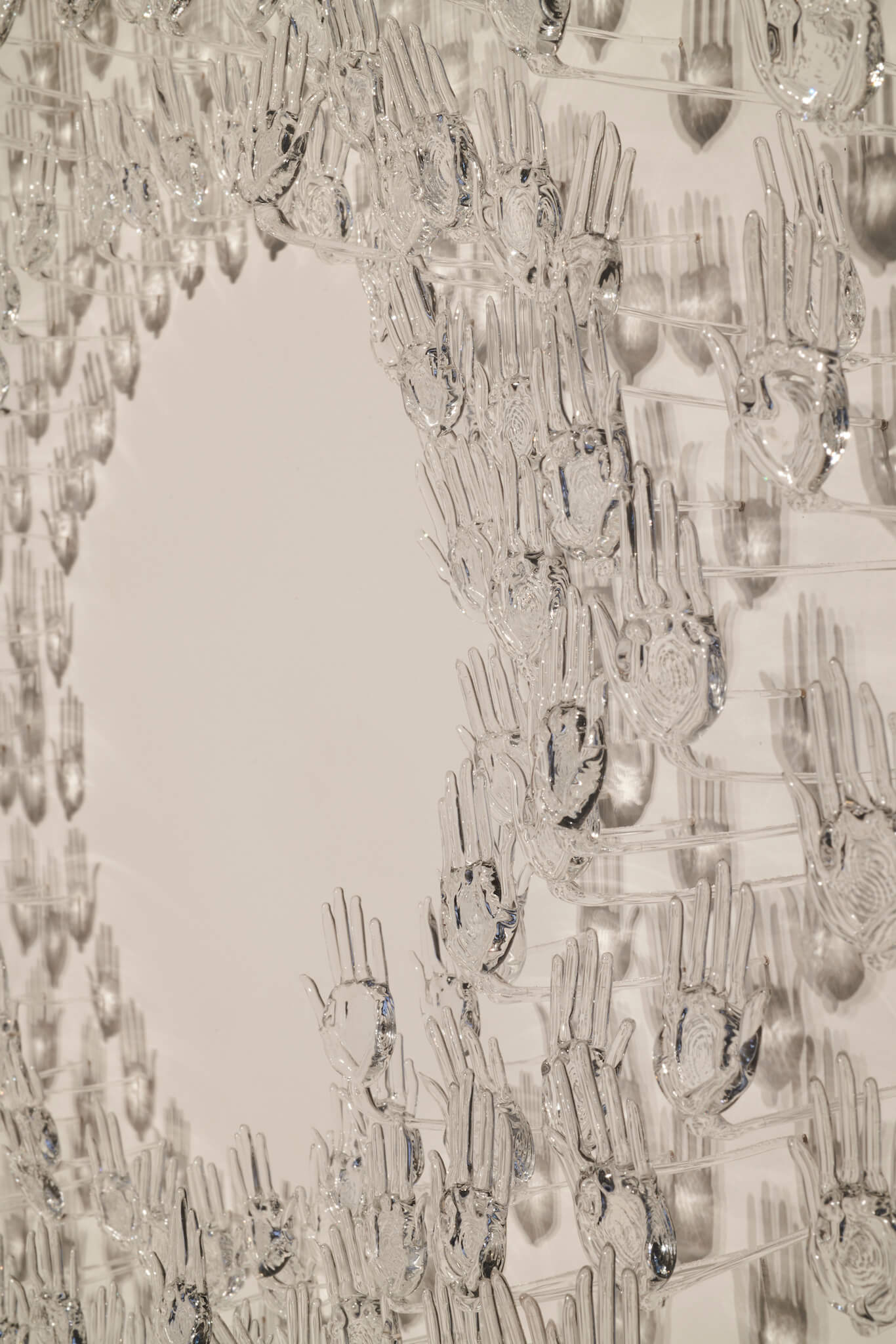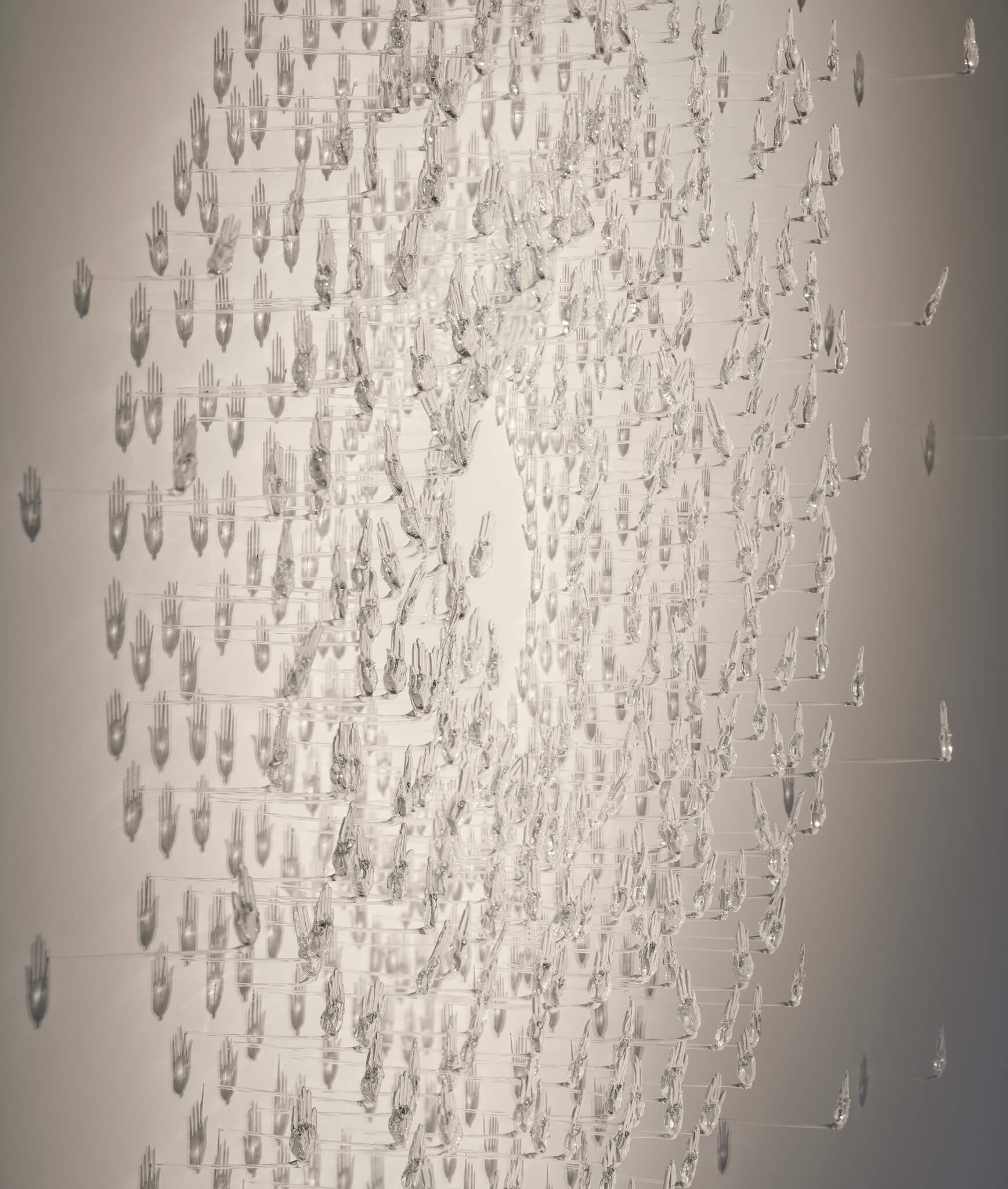Humanity’s greatest war has always been between what we choose to destroy and what we struggle to keep. The history of every civilization, society and country is very similar when analysed thus far: everything tends to vanish, but the way it’s done is what makes a difference.
My work studies this matter, focusing on my own history and culture. As an Iranian–Portuguese artist who grew up during the ‘90s, my life and memories were widely conditioned by a society that was constructing itself. In 1988, a year before I was born, the war between Iran and Iraq came to an end. It was only eleven years since the revolution, so these two events have left the country in a fragile state.
Unfortunately, resources and demography were not the only things that were dangerously harmed. Traditional Iranian culture transitioned towards a progressive, more Western one.
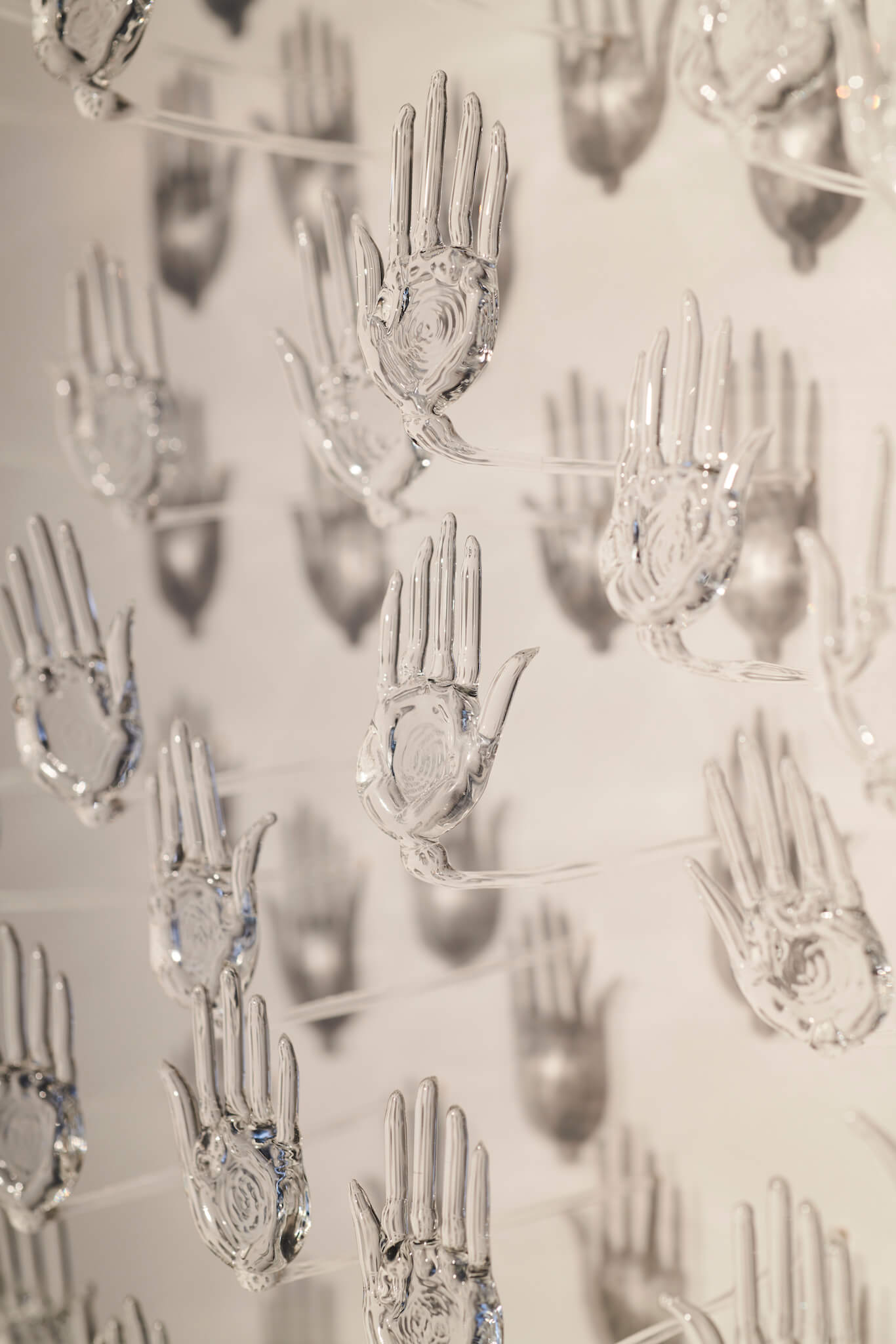
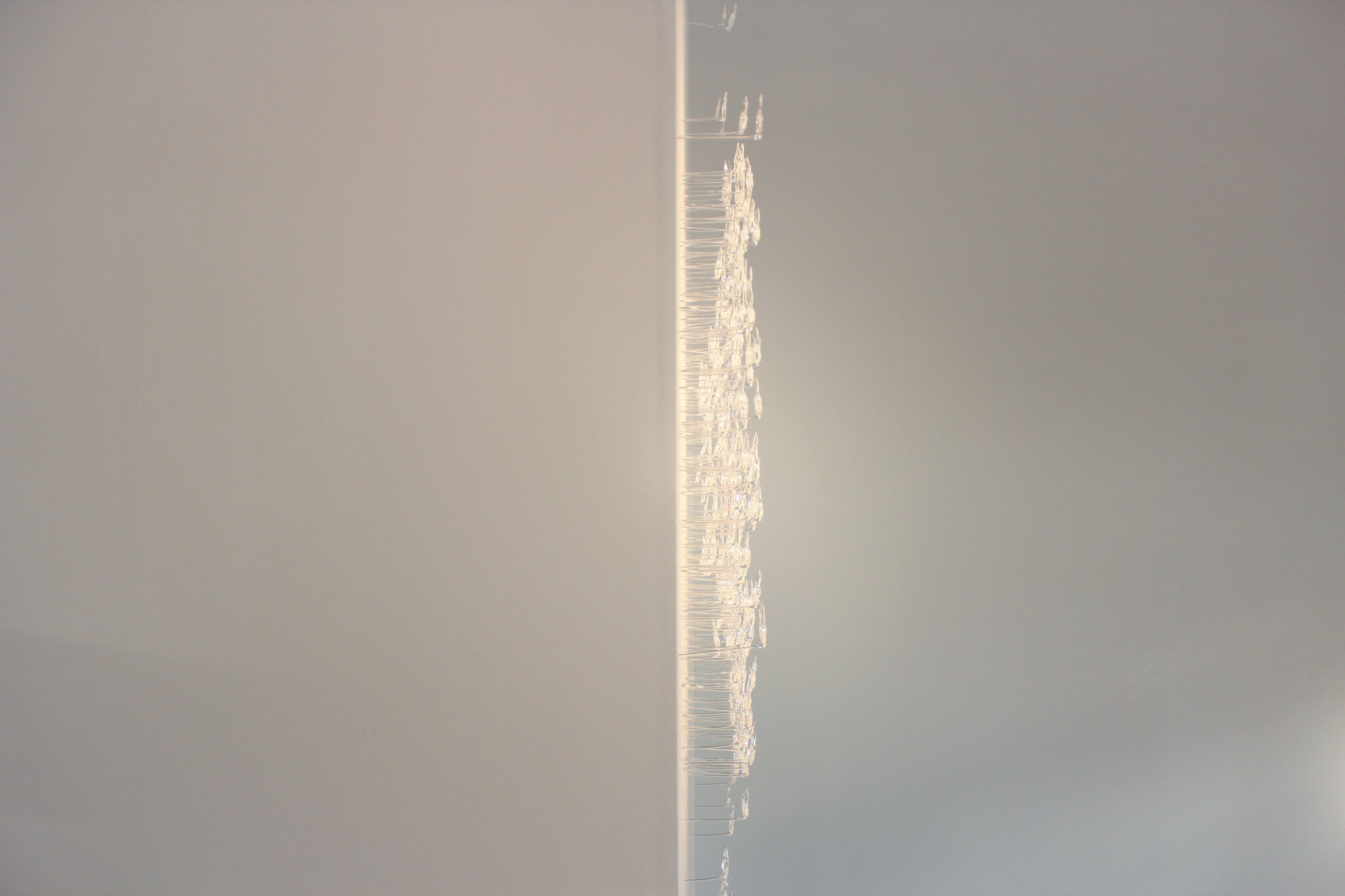
My art revolves around this transition, which I understand as the destruction of the Persian identity in Iran and Afghanistan as two countries that both speak Persian. Many Iranian cities are demolishing old buildings to this day and replacing them with new, modern ones. The ‘90s were the beginning of building sector fever in Iran, right after winning the presidential election with the slogan of DEVELOPMENT. What I recall from my hometown is a city under continuous construction. The streets were full of scaffolds, cement and workers.
Construction workers were usually from Afghanistan. They were immigrants who ran away from war. The beautiful songs they sang while working hard were about lovely old days in their motherlands, missing their families and home, men who worked laboriously to rebuild cities. I believe that while both Iranian employers and Afghan workers fought to modernize the country, they all felt they were making cities a better place for everyone. In reality, workers didn’t have a fair share in the newly built society. They were invisible, but the reflection of their actions is all over the country.
In some period, nearly six million Afghans were living in Iran. The newly imposed American sanctions fell mostly on the shoulders of impoverished peoples, and the Afghan immigrant community was a part of that. Unfortunately, for many reasons, there was not equality between an Afghan citizen in Iran and an Iranian in this society. This economic crisis intensified their unstable situation and caused them to immigrate to another place again, mostly to Europe. This circle is repeating: they are going to build new countries, but they might still be invisible.
I’m working on this project on a subject with two sides. The first side is a glass installation. This work was made using 500 transparent borosilicate glass hands. Transparency and the combination of the light and shadows of each hand made an amazing spotlight in each hand’s shadow, which is a sign of the light of our beliefs that exists in our hearts.
Each hand has a unique character, as it was made separately and carefully. They are gathered around an empty circle area with a 30cm diameter and form a bigger circle with a 100cm diameter.
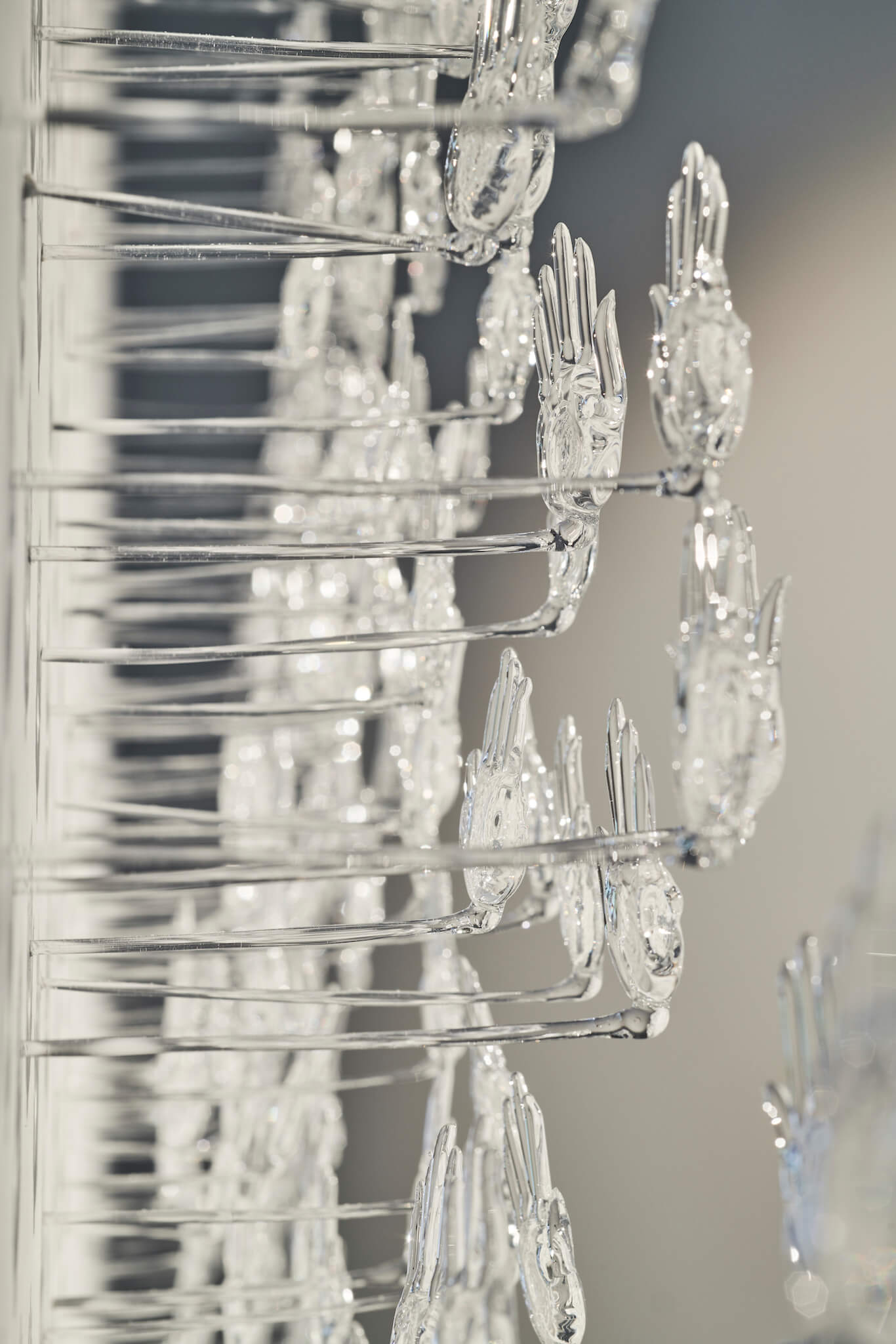
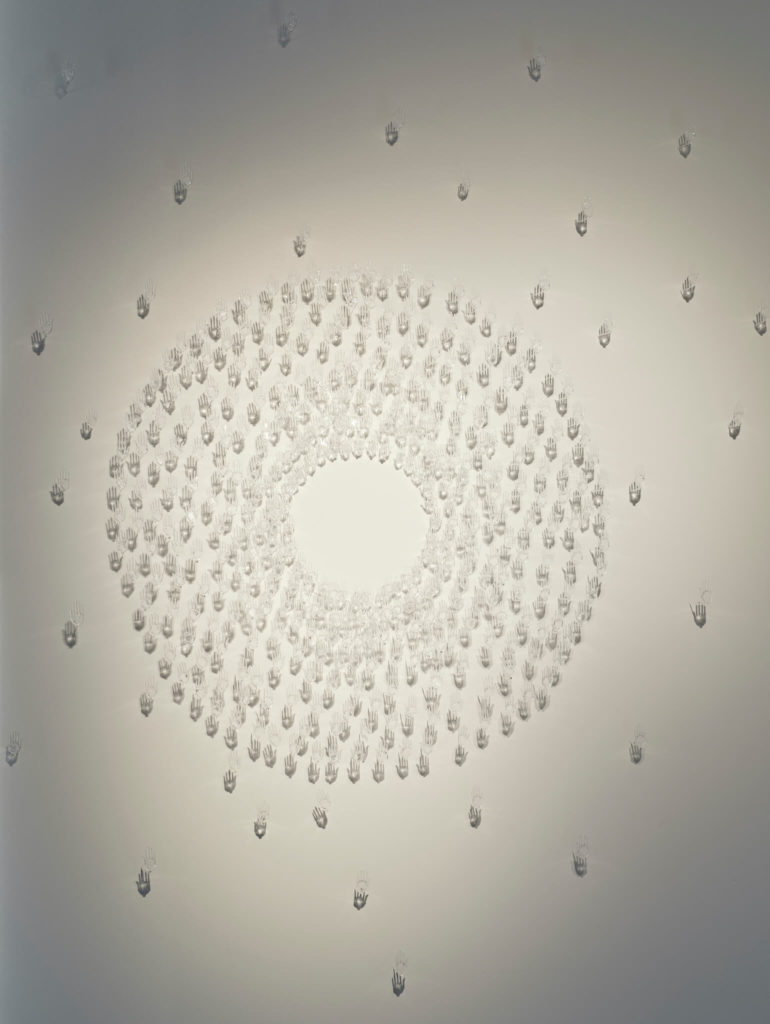
Hands are special in most religions, cultures and societies. They can signify many symbols, thoughts and wills. In this work, hands are built only to represent hands, which bear the weight of construction but were never appreciated.
The second side is a collection of Afghan workers’ voices and songs that they sang during their work. These songs are recorded in their original workspace, untouched, with actual environment noises. I searched for and spoke with the workers over approximately three years in order to make this collection.
I wanted to show voices to my audience, who might not even know Persian. Of course, none of the workers was a professional singer. But I believe we can feel the emotion of the character behind the voices through the piece they choose to sing and the sensations of pitch and vibrato.
I want to share a journey that I witnessed with people who have had the same experience or will be part of it in the near future – not just newly arriving immigrants.
